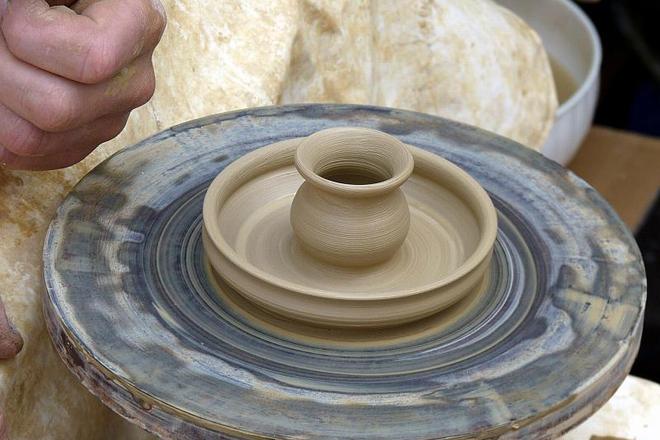WATCHING a group of women precisely embroidering lacework, seeing woodcarvers creating new masterpieces, tasting traditional Slovak food, listening to songs in different dialects or enjoying the performances of folk dancers – all the while seeing everyone dressed in clothing that many young people would call way out-of-date. Once a year, Slovakia’s capital dispenses with its image as a modern city and returns back to the times before skyscrapers or aeroplanes, when people earned their living through various kinds of crafts.
It has become a tradition that Bratislava’s city centre, and more specifically its old town, becomes occupied by craftsmen and artists during the Days of Masters, which this year runs from September 2 through September 4. The Centre for Folk Art Production (ÚĽUV) recruits people from all three historical regions of Slovakia – west, central and east – and brings them to this spot in Bratislava to remind 21st-century Slovaks of their traditions and their past.
The festival has been dedicated to many different themes throughout its 21-year history. This year’s theme has the motto Vykroj sa z davu (Cut Out from the Crowd) to focus attention on one important but nearly forgotten part of history – traditional Slovak folk clothing called ‘kroj’ Inspired by the traditions of Norwegians who proudly wear their traditional folk costumes each year on their Constitution Day, ÚĽUV decided to connect Slovakia’s Constitution Day, celebrated on September 1, with its festival of crafts and this year to focus specifically on the kinds of clothing that were once an inseparable part of everyday life in Slovakia.
“We will bring people from all corners of Slovakia who will bring every colour of language, and traditions that are characteristic of their regions,” said Milan Beljak, the head of ÚĽUV. “They will also bring their folk costumes, very interesting and rich, which are a clear identification of their region.”
ÚĽUV plans to present ‘kroj’ and folklore itself in many different ways, both traditional and modern, to tell young people that they should not be ashamed when they want to wear traditional clothing.
“The word ‘folklore’ has a negative meaning these days,” said Juraj Hamar, the director of the SĽUK folklore ensemble. “But it should not. Through our performances we want to show that folklore can be an inspiration for new outputs, current and popular pieces.”
Thus, the festival is dedicated not only to presentation of classic folk dances and songs but also to showing experimental folk performances, offered primarily by SĽUK. A part of the Saturday programme is a fashion show where three contemporary designers – Michaela Bednárová, Lenka Sršňová and Lucia Poncíková – will present their designs presenting traditional folk costumes in a more modern way, one that could be attractive for the younger generation.
Two other traditional parts of the festival are the creative workshop, where children and their parents will be allowed to watch various crafts as well as be encouraged to try their own hands, and a show of the art of embroidery in which 80 people will present their creations. Visitors to Days of Masters can also taste traditional Slovak cuisine and watch performances by ethnic Slovaks from Békéscsaba, a village in Hungary, who will present the traditions they have preserved since leaving Slovakia.
“There will be 250 craftsmen,” said Beljak of ÚĽUV, adding that all of Slovakia’s regions and all of its types of crafts will be part of the festival.
The festival also has a charitable aspect. In cooperation with the Divé maky (Wild Poppies) civic association, the festival’s organisers will collect voluntary donations that will be used in the civic association’s ‘Crafts for Roma Children’ project, which seeks to develop and showcase Roma talent in this field.



 Traditional pottery-making. (source: TASR)
Traditional pottery-making. (source: TASR)